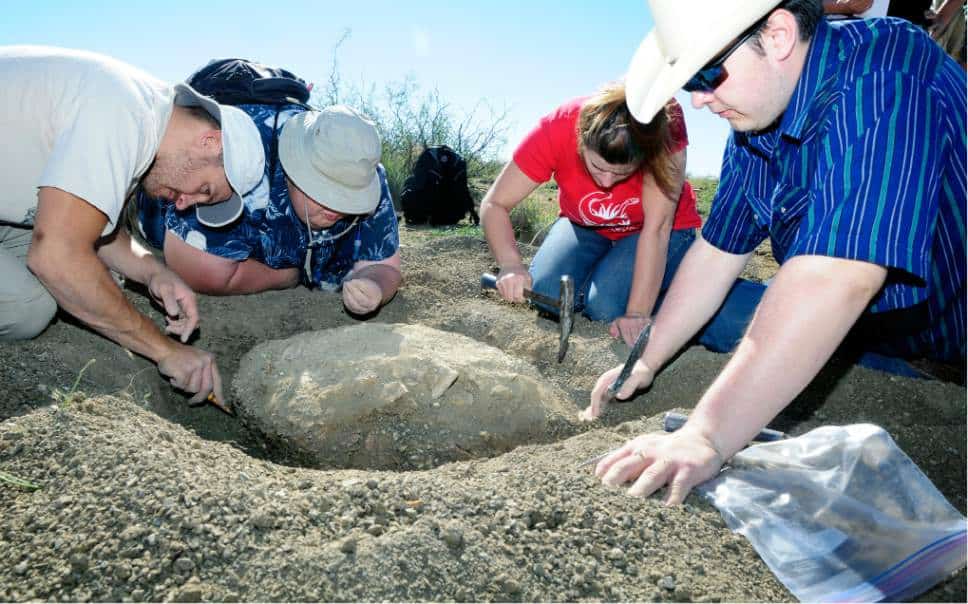Fossil hunting can be exciting and highly rewarding, but sometimes, fossils are also found through a fluke. Jeff Dornbusch, a volunteer with the Truth or Consequences museum in southern New Mexico (a museum of local history and tradition), was taking a hike on his day off when he stumbled on what he initially thought was a pile of rocks.

n this undated photo, people from the New Mexico Museum of Natural History pictured from left to right, fossil preparer Tom Suazo, geosciences collections manager Amanda Cantrell, volunteer Jake Sayler and student researcher Asher Lichtig excavate a turtle fossil east of Turtleback Mountain, N.M., a well-known peak near Truth or Consequences. The fossilized remains of the turtle are believed to have lived in a swampy environment tens of millions of years ago. (AP Photo/The Las Cruces Sun-News, Robin Zielinski)
“I never really knew this area as a place for marine fossils — shells and stuff in the mountains,” he said.
The turtle fossil dates from approximately 90 million years back, during the mid Cretaceous. The Cretaceous was a period with a relatively warm climate, with high sea levels and low ice caps. It was also the evolutionary peak of the dinosaurs, with well known creatures such as T-Rex and the velociraptor. Dinosaur diversity reached its supreme moment while New Mexico looked very different than it does today. Tom Suazo, fossil preparer for the New Mexico Museum of Natural History said:
“Basically, what this is a swampy, near-shore environment”. Suazo and his team helped excavate the site last week.
The fossil belongs to the genus Adocus. Adocus is an extinct genus of aquatic turtles with contoured shells with horny sculptured plates. The shells could reach a length of about 80 cm. These large freshwater turtles had an omnivore diet and survived millions of years after the dinosaur extinction, ultimately fading out during the Oligocene, some 30 million years ago.
When Dornbusch found the fossil, he contacted the U.S. Bureau of Land Management scientist about the fossils (which ironically, was located about 6 miles east of Turtleback Mountain). Vertebrate fossils on federal land are protected and you are not allowed to remove them on your own. A team of experts came to the site soon afterwards, carefully extracting the fossil so that it doesn’t suffer any damage.
Turtle fossils are pretty rare, and now geologists plan to clean it up and exhibit it in the Museum of Natural History.









